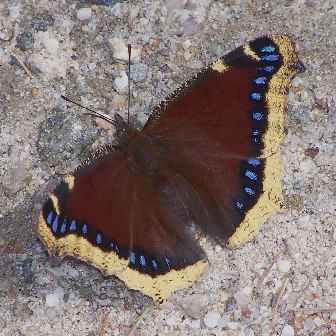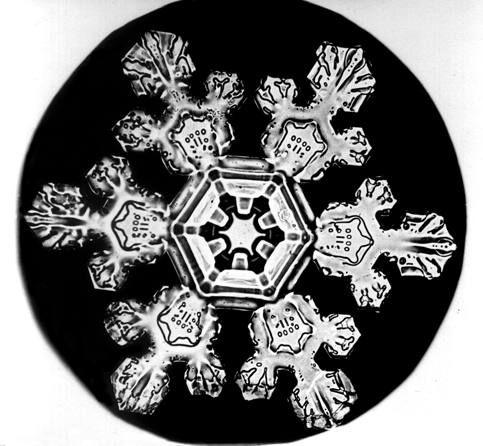 Every year I wait eagerly to see my first butterfly of spring. Most likely, it will be a mourning cloak (Nymphalis antiopa), a large butterfly with velvety brown wings and yellowish white wing edges. This beautiful “harbinger of spring” emerges on the first warm days, often before all the snow has melted.
Every year I wait eagerly to see my first butterfly of spring. Most likely, it will be a mourning cloak (Nymphalis antiopa), a large butterfly with velvety brown wings and yellowish white wing edges. This beautiful “harbinger of spring” emerges on the first warm days, often before all the snow has melted.
How does the mourning cloak appear so early in the season? Hold onto your hats because this gorgeous insect contradicts everything we tend to believe about butterflies:
Myth 1: Butterflies die or head south for the winter.
Mourning cloak adults hibernate through the New England winter. Relying on “antifreeze” chemicals in their blood, mourning cloaks spend the winter in a sheltered place, such as in rock crevices, under bark, or in a woodpile. They emerge on warm days, sometimes as early as February, and treat us to visions of spring with their graceful flight. Other overwintering butterflies in New England to watch for include eastern commas, question marks, and compton tortoiseshells.
Myth 2: Adult butterflies only live for a few days.
Due to their overwintering strategy, mourning cloaks can have a lifespan of over 10 months. One of our longest-lived butterflies, mourning cloaks have been seen in flight in Massachusetts during every month of the year.
Myth 3: Butterflies nectar on flowers.
There are no blooming flowers in early spring when mourning cloaks emerge, so how do they feed? Mostly on tree sap, particularly from oaks. Mourning cloaks will also feed—brace yourself—on animal droppings and decaying things. Occasionally, if I have been hiking hard, a mourning cloak will land on my hand or head, attracted by the minerals in human sweat.
So, on the first warm day head toward a sun-dappled opening in the woods, preferably with storm-damaged trees and broken branches dripping sap, and wait for this resilient insect to make its appearance. Like you, it has managed to survive another New England winter.
To learn more about the mourning cloak and other butterflies of Massachusetts, check out Mass Audubon’s Butterfly Atlas.
Photo © Frank Model


